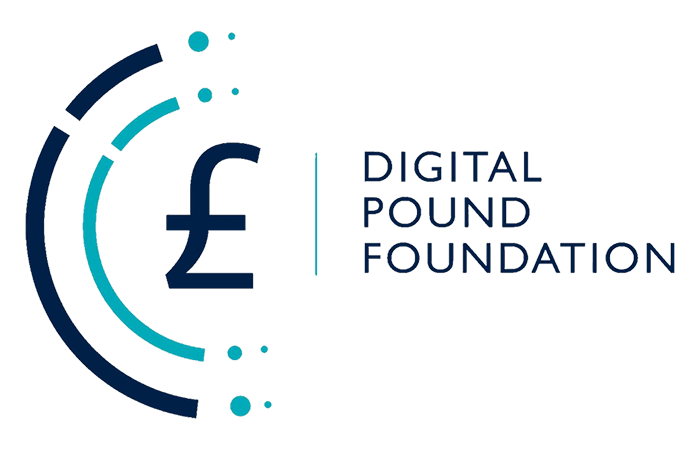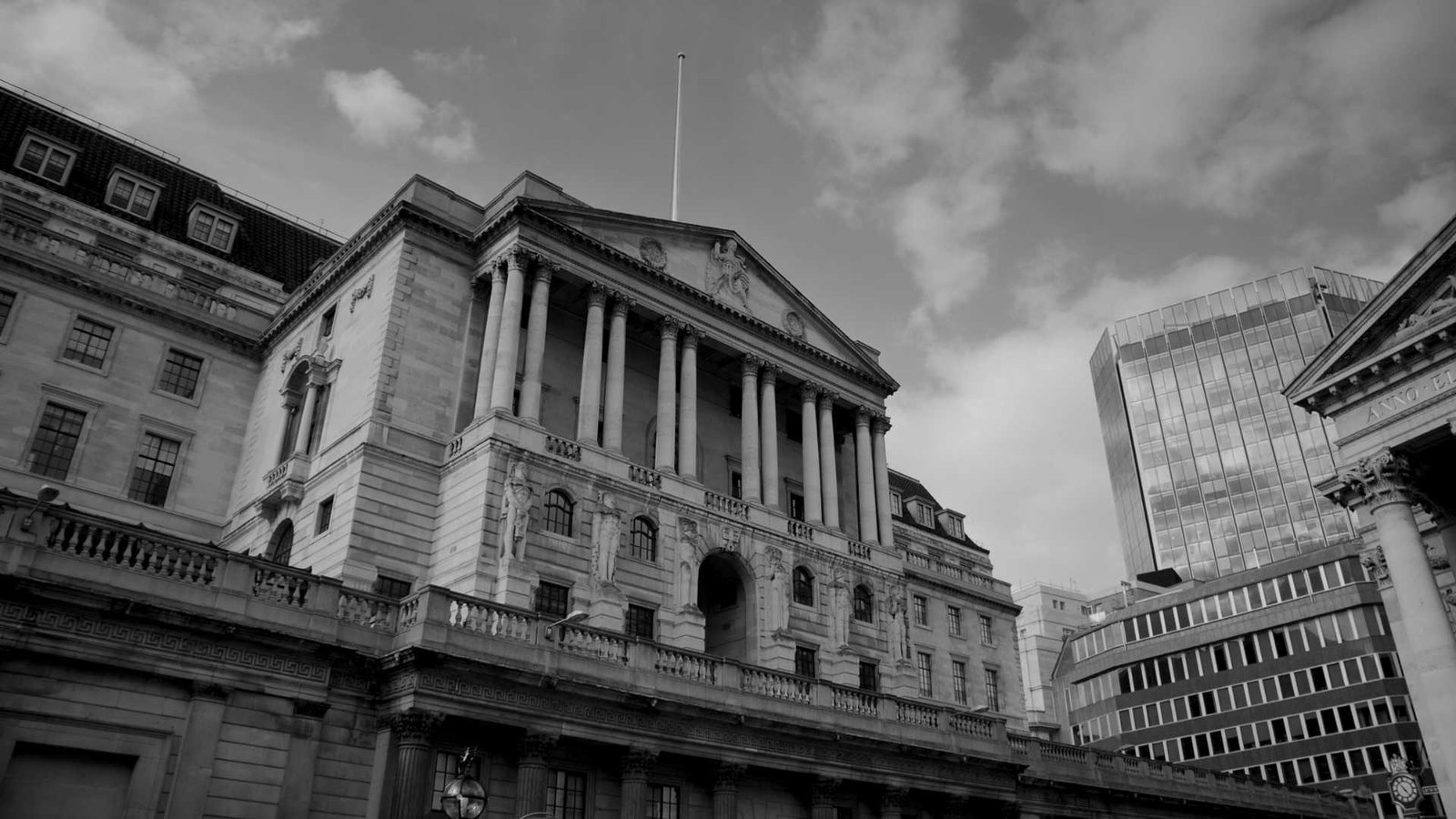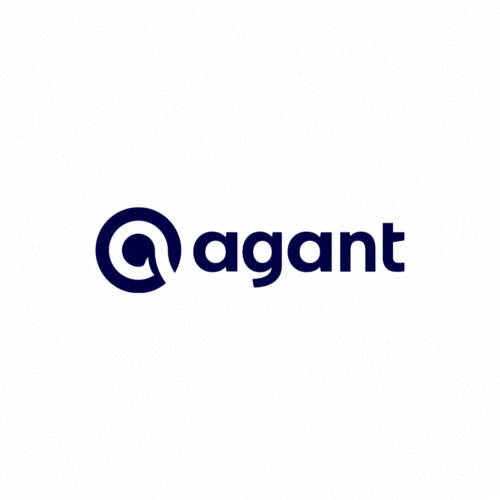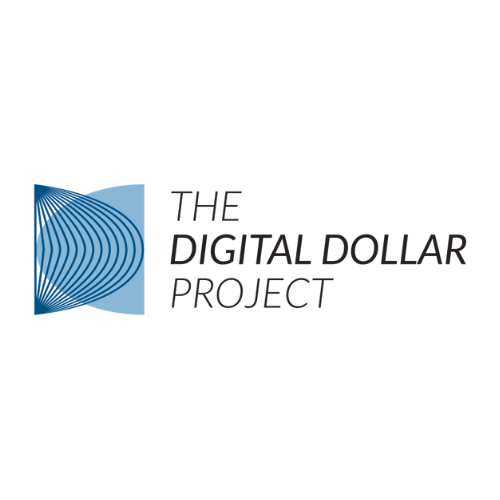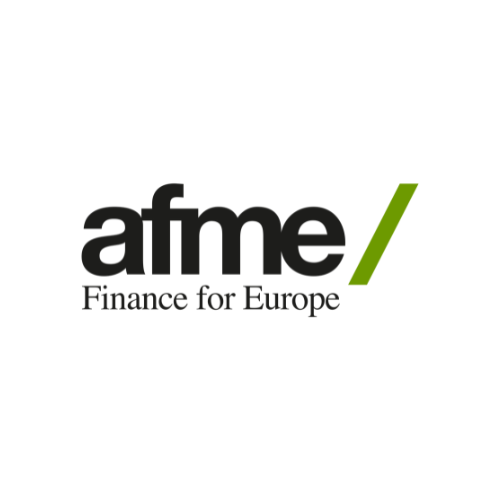The Digital Pound Foundation takes pleasure in responding to this consultation.
The DPF is supportive of the UK government’s commitment to place the UK’s financial services sector at the forefront of cryptoasset technology and innovation, and to take a staged and proportionate approach to cryptoasset regulation, which is sensitive to risks posed and responsive to new developments in the market. We further support the decision to focus on stablecoins in the first instance given their potential to develop into a widespread means of payment.
The DPF also agrees that the introduction of such regulation will help create the conditions for issuers and service providers of stablecoins and e-money tokens used as a means of payment to operate and grow safely in the UK, driving consumer choice and efficiency. However, we recognise that the government also considers it necessary to ensure appropriate and proportionate tools are in place to mitigate the financial stability issues that could materialise by the failure of a firm of systemic scale. To date, no firm in the UK has yet launched a stablecoin capable of being used as a means of payment to such an extent. Globally, stablecoins such as Tether’s USDT and Circle’s USDC are primarily used for transacting in cryptocurrencies; that said, their potential benefits in both wholesale and retail payment and settlement use cases are well documented. It is only a matter of time until they are more widely adopted. We are also mindful of the efforts by private entities to introduce stablecoins whose use would, by virtue of the user base and platform on which they are offered, rapidly become systemic in nature (the now-defunct Libra and Diem proposals being a prime example of this phenomenon).
We have read this consultation in conjunction with a number of other recent HMT and Government publications that reference the future regulatory treatment of stablecoins, including:
- HMT Response to the consultation and call for evidence on the UK regulatory approach to cryptoassets, stablecoins and distributed ledger technology in financial markets
- Draft Financial Services and Markets Bill
- Payments Regulation and the Systemic Perimeter – HMT Consultation and Call for Evidence
The DPF is also mindful that privately-issued new forms of digital money remain a nascent sector at present, and that many discussions – including those between the Digital Pound Foundation, its Members and Partners, and the wider financial community – are taking place about the form of digital money in the future, and the market structures and ecosystems that may evolve and rise.
Whilst it is true that recent events in the cryptoasset markets have highlighted the need for appropriate regulation to mitigate consumer, market integrity and financial stability risks, it is also notable that the stablecoin regulatory perimeter currently envisaged by HMT would not have prevented the collapse of TerraUSD, a so-called algorithmic stablecoin. We are mindful of the potential for this emerging sector to evolve unexpectedly, and for the risks of potential contagion and systemic impact to manifest itself in ways difficult to envisage at present. In this context, regulators and policymakers should remain vigilant and mindful of the need for appropriate risk management not only on the part of the issuers of those stablecoins that may become systemic in scale, but also on the part of systemically important users of such stablecoins (specifically, regulated financial institutions).
Definitions
In reading this consultation, we cross-reference to the following definitions provided in recent publications:
1. “digital settlement asset” is proposed in the Draft Financial Services and Markets Bill to mean a digital representation of value or rights, whether or not cryptographically secured, that—
- can be used for the settlement of payment obligations,
- can be transferred, stored or traded electronically, and
- uses technology supporting the recording or storage of data (which may include distributed ledger technology).
2. With respect to the definition of a “systemic DSA firm”:
In the proposed amendments to the Banking Act 2009 set out in the Draft Financial Services and Markets Bill: a “DSA service provider” is a person who provides one or more services in relation to a payment system that includes arrangements using digital settlement assets where—
a. the person creates or issues the digital settlement assets involved in the payment system,
b. the person provides services to safeguard, or to safeguard and administer, digital settlement assets including their private cryptographic keys (or means of access),
c. the person is directly involved in any of the activities mentioned in paragraphs (a) or (b),
d. the person is a digital settlement asset exchange provider,
e. the person sets rules, standards, or conditions of access or participation in relation to the payment system, or
f. the person provides any service that facilitates, or supports, a transfer of money or digital settlement assets to be made using the payment system, including any infrastructure provider in relation to the system.
Taking this together with the proposed expansion of the systemic payments perimeter in HMT’s recently published Payments Regulation and the Systemic Perimeter – HMT Consultation and Call for Evidence, a systemic DSA firm would be a DSA firm that was also one of the following:
- systemic payment systems (already in scope), where these are judged to be likely to threaten the stability of, or confidence in, the UK financial system or have serious economic consequences for the UK
- associated service providers (already in scope) to the above
- providers in their own right, where these are judged to be likely to threaten the stability of, or confidence in, the UK financial system or have serious economic consequences for the UK
- associated service providers to the above
3. As per the HMT Response to the consultation and call for evidence on the UK regulatory approach to cryptoassets, stablecoins and distributed ledger technology in financial markets, with respect to the scope of “stablecoins” for the purposes of the proposed regulation: It is proposed that a definition along these lines would capture all stablecoins that reference fiat currencies, including a single currency stablecoin or stablecoin based on a basket of currencies. The legislation would also capture instruments achieving the same effect, e.g. a stablecoin referencing another stablecoin linked to fiat money, or an instrument which derives its value predominantly from reference to fiat currency.
a. The DPF observes that, in this context, stablecoins referencing commodities and those that are ‘“algorithmically” stabilised would be excluded from the scope of the definition (notwithstanding that certain cryptoassets falling into these categories may already be treated as “specified investments” under the current regulatory perimeter).
Our Understanding of HMT’s Proposal
As a prelude to our response to the questions raised by HMT in this consultation, we now reiterate the key differences between the Financial Market Infrastructure Special Administration Regime (FMI SAR) and the Payment and E-Money Special Administration Regime (PESAR):
- The FMI SAR was established to address the risks posed by the possible failure of payment systems recognised as systemic (for instance, Faster Payments or BACs), where the government judged that disruption to or the discontinuity of such a system due to insolvency would not best serve the public interest given potential impacts on financial stability. As such, the FMI SAR imposes an objective on administrators to pursue the continuity of a failed payment system’s services ahead of the interests of its creditors, and provides the Bank of England with powers of direction and oversight over the administrator to this end. In short, the goal of the FMI SAR is to ensure that in-flight payments and transactions complete in an orderly manner, and its objective is one of financial stability.
- The PESAR was established to address the risks posed by the possible failure of payment and electronic money institutions, where the insolvency of such firms previously has resulted in lengthy delays in the return of customer funds. To this end, the PESAR provides administrators with an expanded toolkit to provide for, among other things, the prompt return of customer funds and provides the FCA with powers of direction over the administrator. In short, the goal of the PESAR is to ensure that consumer funds are returned promptly and in full, and its objective is one of consumer protection.
- Given that a systemic DSA firm may be both the issuer of a stablecoin as well as the operator of a payment system utilising that stablecoin (as well as potentially the provider of a custodial wallet for holding that stablecoin), it is indeed unclear at present as to which regime would apply.
HMT’s proposal is that, in the case of systemic DSA firms, the FMI SAR should generally apply, and where there is overlap, it should take precedence over the PESAR, for those systemic DSA firms that fall within the scope of both regimes.
HMT states in the consultation that it considers the FMI SAR to be the most appropriate regime primarily because it considers the Bank of England, rather than the FCA, as the lead regulator in the administration of systemic DSA firms. As lead regulator, the Bank of England would, in this proposed model, have powers of direction over an appointed administrator that will enable it to pursue its statutory role with regard to financial stability.
HMT observes that, unlike traditional payment systems, DSAs allow users to store value which is then used for the movement of funds between cryptoassets without transitioning into fiat money. In recognition that the FMI SAR as it stands today will not address all the financial stability risks arising from the failure of systemic DSA firm (such as, for example, those arising from its activities as a stablecoin issuer and a custodial wallet provider), HMT has proposed that the FMI SAR be amended to include an additional objective covering the return or transfer of funds and custody assets which may only be considered when the FMI SAR is applied in relation to systemic DSA firms, and to make any necessary further amendments consequential to this. This, in HMT’s view, would allow administrators to account for the return of customer funds and private keys as well as continuity of service.
Furthermore, the consultation sets out the government’s intention to enable the Bank of England to direct administrators as to which objective should take precedence in an administration, thus ensuring that the Bank of England can respond flexibly to the specific circumstances of a firm’s failure. This response would help ensure that the particular risk that the firm presented to financial stability could be addressed.
Recognising the regulatory overlap between authorities including with regards to consumer protection, the government considers it appropriate that the Bank of England shall be required to consult the FCA before seeking an administrative order for a systemic DSA firm, subject to regulatory requirements imposed by both the Bank of England and FCA, or direct administrators with regards to the regime’s objectives. HMT’s view is that this will seek to ensure that the Bank of England appropriately considers the impact on consumers of any direction it issues to an administrator, and HMT also notes that this is aligned with the approach taken for other entities regulated by both the Bank of England and FCA.
Consultation Response
1. Do you have any comments on the intention to appoint the FMI SAR as the primary regime for systemic DSA firms (as defined at para 1.8) which aren’t banks?
The DPF is generally supportive of the proposed approach, which recognises the nature of systemic DSA firms as not only the operators of stablecoin-based payment systems but also as potential stablecoin issuers and custodial wallet providers. We do however observe some key areas which require further clarification:
a. Whilst we acknowledge the principle that systemically important payment systems (loosely defined as those whose failure could imperil the proper functioning of the UK economy) should fall within the Bank of England remit, we would also wish to clarify that, in the case of those DSA firms that are solely consumer-facing and do not operate a payment system of systemic importance, these remain under the sole purview of the FCA in line with the current e-money and payments regulatory regimes. Clarity is required to ensure that these remain appropriately supervised by the relevant regulator and that the principle of “same risk, same regulation” is followed; in short, that certain firms are not treated differently purely due to their underlying technological operating model.
i. We acknowledge the Bank of England’s remit for oversight of payment system operators and suggest that HMT await the outcome of the pending consultation by the FCA and the Bank of England that will set the regulatory perimeter before making a final decision on the mandate of the Bank of England with regard to consumer-facing firms.
b. We observe that at present, a bank issuing a stablecoin (or any other new form of digital money, such as a tokenised form of commercial bank deposits) would not be treated as a systemic DSA firm for the purposes of the proposals contained in this consultation (which applies exclusively to non-banks), as they are catered for by separate pre-established regimes. From a consumer perspective, this could lead to differing outcomes in the event of the failure of a bank stablecoin issuer vs a non-bank stablecoin issuer.
i. The proposed regime under the FMI SAR only applies to non-bank firms. We can only assume that it is not intended to apply to bank issuers as funds received by a bank in exchange for a stablecoin or DSA will be ‘deemed’ a deposit and protected by FSCS and returned according to FSCS rules, within the relevant bespoke bank insolvency process under the Banking Act 2009 (as amended). We also assume that given the intention to take current payment services regulation as the basis for future stablecoin regulation, funds received by non-bank firms in exchange for stablecoins or DSA will need to be ‘safeguarded’
ii. If this assumption is correct, then this framework results in anomalies that exist today between the deposit guarantee scheme and safeguarding and need to be addressed.
- In the event of a bank insolvency, the funds backing the DSA and held by the bank as a deposit will be protected in line with FSCS limits. Funds safeguarded by a non-bank firm are not subject to such a limit as 100% of the funds are safeguarded.
- In the event of bank failure, FSCS will protect depositors; however, customers of the non-bank firm whose safeguarding account is held with the bank do not benefit from FSCS protection.
c. The current lack of clarity on the treatment of reserve assets in an insolvency situation means that it is not possible to determine if the suggested proposal in the consultation goes far enough in ensuring appropriate consumer protection.
d. There is also at present no mention of the proposed roles of the PRA and the PSR in this ecosystem, and given their own respective role for e-money firms and payment systems, this means that it is not possible to determine if the proposals in the consultation fully addresses the risks that HMT seeks to mitigate.
e. We also note that it is not settled, as a matter of policy, the extent to which the ownership status of the holder is merely contractual or if in fact an officeholder will be dealing custody assets sitting outside the insolvent estate, but held by the insolvent DSA as trustee. For these reason we anticipate a bespoke legal framework may be required sooner rather than later, as these questions are resolved
2. Do you have any comments on the intention to establish an additional objective for the FMI SAR focused on the return or transfer of customer funds, similar to that found in the PESAR, to apply solely to systemic DSA firms?
As above, we understand the need for this additional objective and support its introduction. For those systemic DSA firms that are issuers / custodians / custodial wallet providers and falling into the scope of the FMI SAR, we believe that the FMI SAR’s “continuity of operation” objective should ordinarily take precedence, although the safe and timely return of customer funds should then be the next priority.
We are also of the view that stablecoins should be thought of holistically in the context of new forms of digital money; and that given the potential for different structures and “flavours” to emerge, it is important to ensure that there is not undue divergence between the treatment of banks and non-banks where their risk-taking and risk-generating activities are substantially the same, and that the UK government and its regulatory bodies continue to be mindful of the principles of proportionality and that of “same risk, same regulation”.
The consultation also proposes introducing specific regulations in support of the FMI SAR to ensure that it can operate effectively when applied to DSA firms, including so that the additional objective (return or transfer of customer funds) can be effectively managed by administrators.
However, to the extent there is such priority to the order an administrator has to pursue the objectives, it remains unclear how to reconcile pursuing the additional objective with the overriding continuity of service objective. Could the administrator be criticised for devoting too much time and resource to pursuing the additional objective? These issues should be addressed with clear regulation as to the interplay between the objectives in light of a BoE direction regarding precedence and what an administrator should have regard to when pursuing those objectives.
3. Do you have any comments on the intention to provide the Bank of England with the power to direct administrators, and to introduce further regulations in support of the FMI SAR to ensure the additional objective can be effectively managed, or what further regulation may be required?
No, save for that highlighted in our response to Question 2.
There is also a practical point that should be addressed in respect of a power to direct (i.e. ensuring the Resolution Directorate of the Bank of England has engaged with the insolvency officeholder community to appreciate what administrators have to do in practice, in a manner analogous to the extensive stakeholder engagement that has supported the potential use of the Bank Insolvency Procedure, Building Insolvency Procedure and other tools under the Banking Act 2009 (as amended)).
4. Do you have any comments on the intention to require the Bank of England to consult with the Financial Conduct Authority prior to seeking an administration order or directing administrators where regulatory overlaps may occur?
Whilst we understand the rationale for this, we are conscious of the amount of time such a consultation might take in the context of the FMI SAR’s primary objective; that is, to maintain financial stability by ensuring that in-flight payments and transactions complete in an orderly manner.
To avoid market disruption and consumer/business impact, we would suggest that this step be optional should market circumstances dictate the need for near or immediate intervention. Noting the Memorandum of Understanding (MOU) that exists between the Bank of England, the FCA and the Payment Systems Regulator, we believe the circumstances for such direct intervention could be outlined in the same or a similar MOU.
In terms of the power of direction, the challenge for the Bank of England and FCA will be to ensure that the circumstances for such direct intervention are sufficiently well-understood at the outset of an insolvency process to ensure the risk of regulatory intervention does not prevent the officeholder from discharging their functions quickly and in pursuit of the identified additional objectives.
Additional Observations
In addition to our responses to each question, we would like to make the following observations:
- As highlighted in the report, this consultation builds upon the outcome of the earlier consultation (January 2021) on the UK Regulatory approach to crypto-assets and stablecoins. That not only would bring stablecoin operators within the auspices of the FCA under the Electronic Money Regulations 2011 but, additionally, via an extension of the 2009 Banking Act, would bring Stablecoin Operators within the jurisdiction of the Bank of England’s Financial Markets Infrastructure Directorate (FMID) alongside the existing UK Payment Systems.
- We believe the proposals set out in this latest consultation complement that approach via the extension of the FMI Special Administration Regime to include systemic stablecoin and digital settlement asset firms. In our view, pending any future introduction of a CBDC in the United Kingdom, there is a strong possibility that this “gap” could be filled by one or more well-constructed GBP stablecoins. A well designed and strong regulatory environment (both in terms of day-to-day supervision plus the necessary protection mechanisms should a resolution event arise), would provide consumers and businesses with confidence in the usage of such an instrument (which, in itself, could lead it to pass the systemic threshold).
- We note the intent to extend the SAR with an additional objective covering the “return or transfer of funds and custody assets” and that the Bank of England would direct administrators as to which objective (continuity of service or the return of funds) should take precedence. We would highlight that, in the absence of a CBDC, a well-designed stablecoin might provide a key role to support consumers who might otherwise be financially excluded. As such, we would highlight the wider societal impact of winding-up a widely-used stablecoin, and urge that such a step should only be taken as a last resort should the “continuity of service” objective not be possible. We would draw a parallel to the recent energy firm closures and the need for the largest of these (Bulb) to be kept operational via an SAR given the scale of its customer base.
